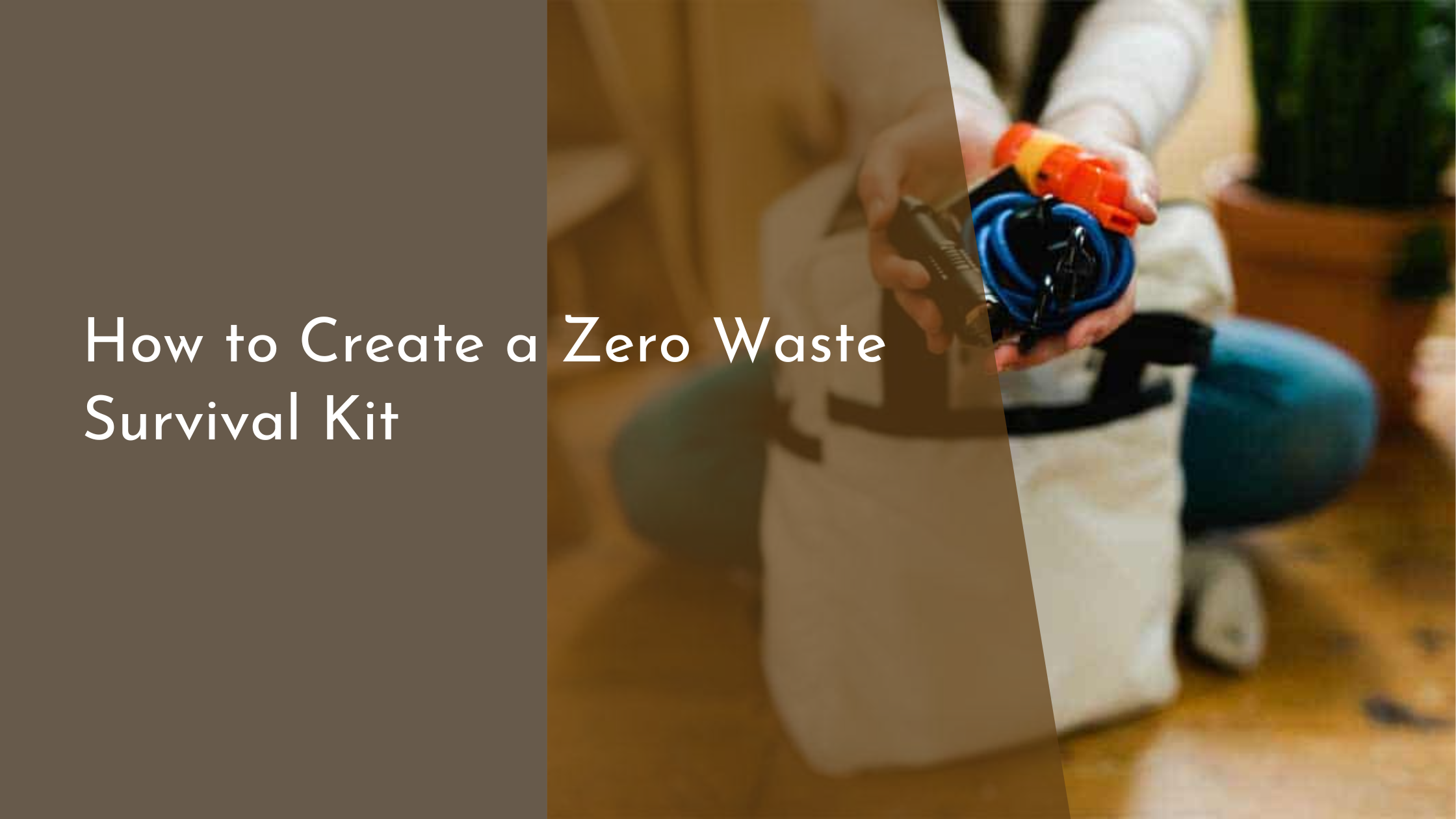How to Create a Zero Waste Survival Kit
In an era where environmental consciousness is more critical than ever, the zero waste movement has gained significant traction, encouraging individuals to minimize their ecological footprint. One innovative approach to sustainable living is creating a zero waste survival kit. This kit is not only practical for emergencies but also serves as a testament to one’s commitment to going green. By embracing zero waste principles, you can ensure that your survival kit is both effective and environmentally friendly. This article will guide you through understanding the zero waste movement, selecting essential components for your kit, sourcing eco-friendly items locally, and maintaining your kit for long-term use.
Understanding the Zero Waste Movement
The zero waste movement is a lifestyle choice that emphasizes reducing the amount of waste we produce and sending as little as possible to landfills. At its core, the movement encourages individuals and communities to rethink how we produce and consume products, aiming for a circular economy where resources are reused and recycled. The goal is not just to recycle more but to fundamentally change consumption habits, heavily focusing on reducing waste at the source. Adopting such a philosophy requires a conscious effort to refuse, reduce, reuse, recycle, and rot, which are often referred to as the Five R’s of zero waste living.
Understanding the principles of zero waste is crucial when creating a survival kit because it helps in selecting sustainable and reusable products rather than single-use items. The zero waste movement encourages using durable materials and reducing reliance on disposable products, which often end up polluting the environment. By integrating this mindset into your survival kit, you ensure that you are prepared for emergencies in an eco-friendly manner. This practice not only helps the planet but also builds resilience by relying on high-quality, long-lasting products.
Essential Components of a Survival Kit
Creating a zero waste survival kit involves carefully selecting items that are multipurpose, durable, and sustainable. Start with a sturdy, reusable bag or backpack made from sustainable materials like organic cotton or recycled polyester. This bag will serve as the foundation of your kit, ensuring that all items are organized and easily accessible. Next, include a stainless steel water bottle and a reusable straw or filter system. Staying hydrated is essential in any survival situation, and these items eliminate the need for single-use plastic bottles.
Additionally, consider including a set of versatile, compact utensils such as a spork or foldable cutlery made from bamboo or metal. Adding a small, reusable container or bento box is also wise for storing food items. Other essential components include a biodegradable soap bar, cloth wipes, and a solar-powered flashlight for clean, efficient energy use. For first aid, opt for a natural, refillable kit with bandages made from organic cotton. Each component should reflect the zero waste ethos by being reusable, recyclable, or biodegradable, ensuring your preparedness doesn’t come at the environment’s expense.
Sourcing Eco-Friendly Items Locally
To create a truly sustainable zero waste survival kit, sourcing items locally is an important step. Buying locally reduces the carbon footprint associated with transporting goods over long distances and supports local economies. Local farmers’ markets, co-ops, and eco-friendly shops are great places to find sustainable alternatives to conventional products. You can often find handmade or locally crafted items that are made with environmentally friendly materials and practices.
In addition to reducing transportation emissions, sourcing items locally allows you to connect with your community and learn more about the zero waste movement from like-minded individuals. Many local businesses prioritize sustainable practices and can offer advice on maintaining an eco-friendly lifestyle. By investing in locally sourced products, you actively participate in a community effort to promote sustainability, while ensuring your survival kit is stocked with high-quality, eco-friendly items.
Maintaining Your Kit for Long-Term Use
Maintaining your zero waste survival kit for long-term use requires regular checks and updates. Inspect your items periodically to ensure they are still functional and in good condition. Replace any expired or worn-out items with sustainable alternatives. This not only keeps your kit up-to-date but also ensures that you are always prepared for emergencies without contributing to waste. Paying attention to the quality and longevity of each component will help you avoid the need for frequent replacements.
Storage is another crucial aspect of maintaining your zero waste survival kit. Keep your kit in a cool, dry place to prevent deterioration and protect it from the elements. Ensure that all items are stored securely within the bag to prevent damage or loss. By practicing mindful maintenance and storage, you can extend the lifespan of your kit, making it a practical and sustainable resource for years to come. This proactive approach reinforces the zero waste philosophy by prioritizing durability and longevity over disposability.
Assembling a zero waste survival kit is not only a step towards being prepared for unexpected situations but also a commitment to sustainable living. By understanding the zero waste movement, carefully selecting essential components, sourcing items locally, and maintaining your kit, you contribute positively to the environment while ensuring your preparedness. This eco-friendly approach offers peace of mind, knowing that you are ready for emergencies without compromising the health of our planet. Embrace this journey towards zero waste preparedness, and inspire others to follow suit in creating a more sustainable future.

